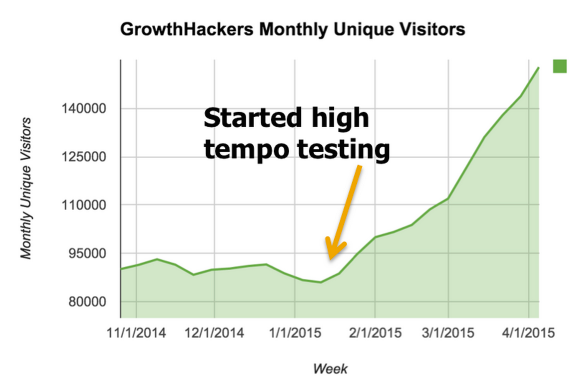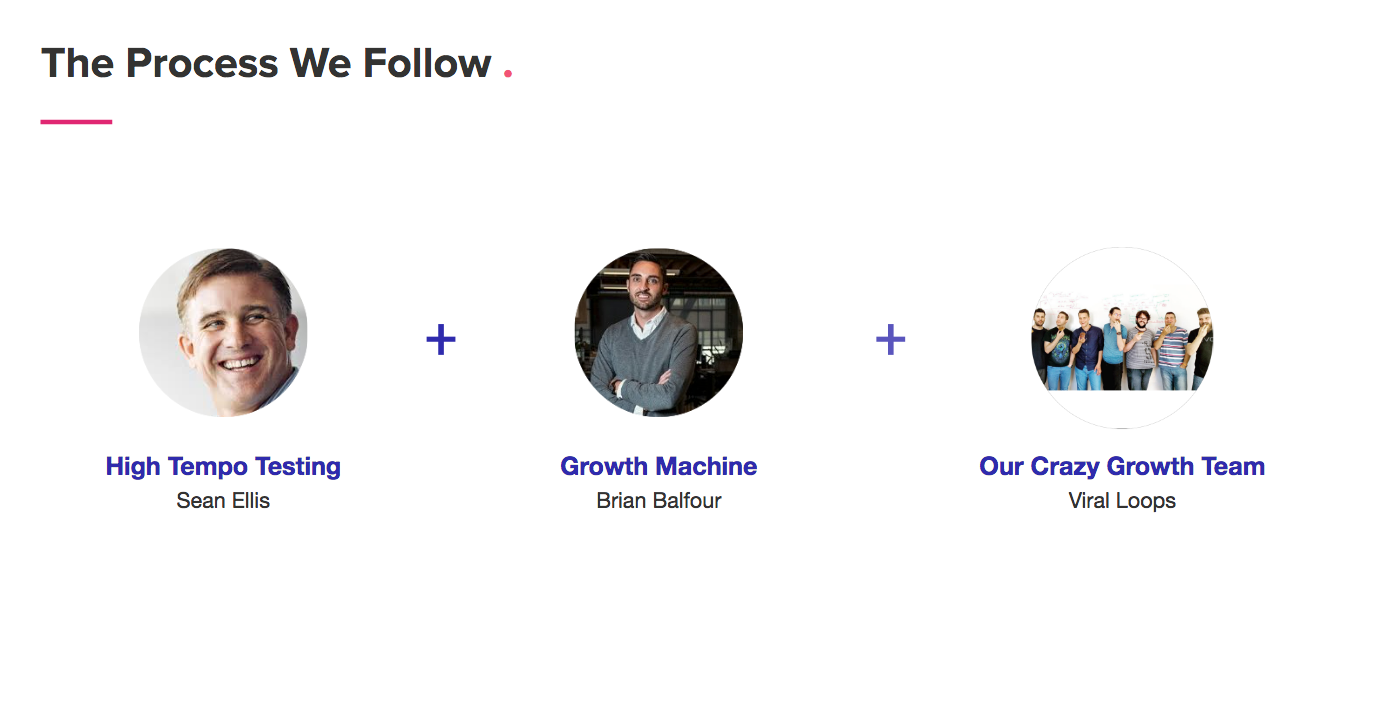While rookies use tactics, pros use processes
So, let’s get started!
You’ve probably been hearing for tactics. People are talking about tactics, everywhere.
“I learned this great hack where you can get thousands of emails.”
“Let’s do CRO to our landing pages.”
“Let’s A/B test our website buttons.”
“I heard Lead Nurturing and Lead Magnets are awesome.”
“Let’s add a referral option to our app and go viral.”

That’s all really nice and attractive. Who doesn’t want to grow exponentially?
But with all those growth tactics available, how come that 75% of venture-backed startups fail?
Well, having a bunch of screws, bolts and tools doesn’t build a machine.

First, you have to find your process- a schematic if you prefer, and then identify which tactics might work in your favor.
Probably most of the content you find about growth is wrong because most of the content is about tactics. ????
“Stop looking for tactics first, and start focusing on establishing a growth process.” — Brian Balfour
Brian Balfour is mostly famous about being Founder/CEO @ Reforge and Previously VP Growth @ HubSpot. He occasionally writes here. You’ll find great stuff in there.
Another great individual to follow is Sean Ellis, he’s the Founder and CEO of GrowthHackers.com. Before that, he led early growth strategy at Dropbox, Lookout, Eventbrite, LogMeIn (launch to IPO), Uproar (launch to IPO).
Sean talked about high tempo testing.

“We grew from 90,000 MAU to 152,000 MAU in about eleven weeks without spending a dollar on advertising or increasing the size of our growth team.” — Sean Ellis
The more tests you run, the more you learn about how to grow your company. So the goal here is to run as many tests per period of time as possible.
That’s the main idea behind high tempo testing.
Test.Learn.Repeat. ????
Growth is about running experiments, analyzing results, and learning quickly. And for this, you really need two things:
- A method for running experiments
- A system for tracking and reporting
By running an A/B test once a month doesn’t count! You need a process, a tempo.

Keep the same tempo for every team member over there!
What we do in Viral Loops
We read a lot.
We test a lot.
We (try to) systemize everything.
We repeat.

We’ve built a weekly process which helps us have everything documented and in order. The truth is that growth is the sum of small parts, there is never a silver bullet.
You can grow by putting effort into many small things and not in a few big. That’s how you’ll learn your channel, product, and customers better than your competitors and this will help you take risks based on those learnings.
Learnings are everything.
Failed experiments liver-punched me enough times to make want to quit. But the shock was an indicator that my team was doing something in a very wrong way.
Keeping a tight documentation about your learnings will save you a ton of time if you aim to grow your team anytime in the future.
Imagine having to teach all the past failures to every new team member. Nightmare.

Your fails should be accessible company-wide, at any moment. It makes it easier to draw the big picture.
“The only way to tackle growth is to get the whole company focused on it” — Sean Ellis
We try to systemize our process for testing and learning in order to keep a tempo.

1. Brainstorm
We keep our ideas in a backlog and try to put everyone one on the team to contribute their ideas. It doesn’t matter what their day to day job is. Growth needs to become everyone’s job.
You can use spreadsheets or any project management tools to keep these precious ideas in one place.
2. Prioritise
We categorize our backlog of ideas by using the AARRR framework (Acquisition, Activation, Retention, Referrals, Revenue). Then we give every idea a score from 1 to 10 by using the “ICE” system. ICE stands for Impact, Confidence, and Ease of execution:
Impact. If this idea works, how much impact will it have?
Confidence. How confident are you that this idea will work?
Ease. Is this idea something that will be easy to test?
e.g.
Let’s say we have an idea with the following individual scores:
Impact: 9/10
Confidence: 5/10
Ease: 7/10
The final ICE score of the idea is simply the sum of the individual score, divided by 3.
This gives our idea an ICE score of 7. The higher the ICE score of an idea, the higher it’s priority.
3. Test
After picking the top ideas to run based on our prioritization, we have to think of a hypothesis and move these ideas to the upcoming tests list. Try to run simple tests.

4. Implement
Upcoming tests are moved to the to-do list and it’s time for implementation. A test might need skills from more than one team member; that’s why we try to work as a team here. ????
5. Analyse
Once the test has finished, write down the results. Did the experiment change the situation upwards? Or downwards? Did it work or not?
Be cautious. This part might be your “getting liver-punched” arc.
Don’t get frustrated.
6. Systemise
This is the point where learnings are born. Write down what you’ve learned, how important it was and how it affects your company and your team.
The main goal is to get learnings at a high tempo. The more testing you do, the more learnings you’ll have. But the key is to share those learnings with the rest of your team.
As I said, we like to keep everything documented. We write down our learnings on a weekly basis (Weekly Learnings doc). Also, we keep track of some basic metrics in the AARRR funnel (Weekly Metrics Spreadsheet). The documents we’re using are the ones below.

We couldn’t be organized without using
- GrowthHackers Projects to track our experiments
- Google Docs and Notion to have all our docs in one place
- Trello and Asana to write down tasks and experiment ideas
- Slack for team communication. (sometimes we work remotely)

Delivering value to customers is so damn important
When you’re focused on growth, sometimes you get caught up in the data, but be careful, you might lose your path.
Your path is your customers.
If you keep your customers at the top of your priorities and you continuously deliver value to them, growth will follow.
Everything you build has to be for your customers.
Happy customers are the real key to growth ❤
Generate ideas. Run experiments. Learn. Repeat.
If you run out of ideas, always remember:

Cheers ????

2 comments
I like that you view it more like a job, because when some people are talking about growth hacking it sounds like a magic trick.
I will save your process and try to work with it the same way.
Thanks a lot Hans! Your feedback is inspiring. We will have more posts like this coming up.